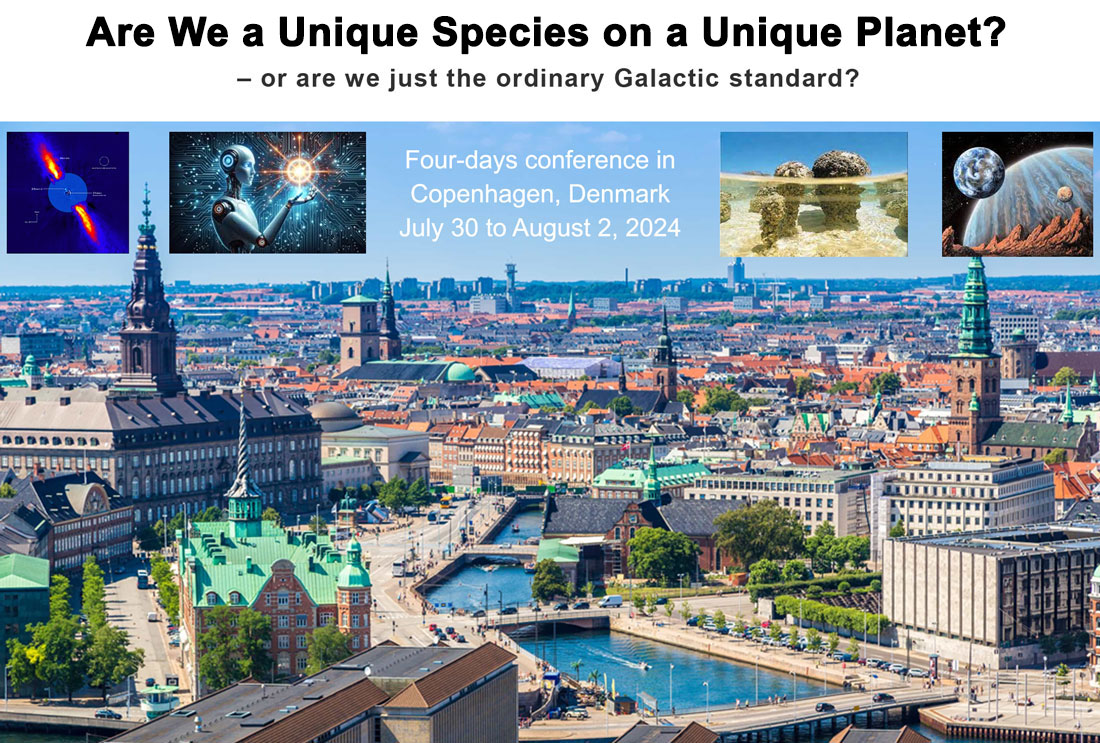
<< Register for the conference >> (closed)
![]()
Venue: The conference will be located in the historical Festauditorium - (A1-01.01) at Frederiksberg Campus
Address: University of Copenhagen/SCIENCE, Frederiksberg Campus, Bülowsvej 17, 1870 Frederiksberg C
From exoplanets to biology to future of life:
Homo sapiens may be the only species in the entire Galaxy with an intelligence advanced enough to understand how it all arose and evolved. But we may also be so dumb that we just don’t understand that the universe is already teeming with life everywhere, similar or very different from ourselves. Each of the scenarios would be equally fascinating, and the sign of a road towards a meaningful answer has never been closer than it is today. We are lucky to have convinced world-leading experts to come to Copenhagen to discuss the issue with us during four intense conference days.
The meeting starts with discussing the achievements and perspective toward understanding how planets form and how planetary systems around other stars look like compared to our own solar system. Is there something special about our Earth, or maybe in the formation and configuration of the entire Solar system, that could make us suspect that life arose only on the small blue dot where we (happen to?) live? Do basic physics and chemistry demand that the same starting conditions will always lead to the same, habitable or inhabitable, planetary outcome?
The first pre-biological molecules seem to have formed already in the dusty clouds that seeded the planet formation, but did they play a role for the later rise of the first life? Earth-sized planets seem to be among the most common exoplanets, and a large fraction of them are within the habitable zone of their host star. But does this number tell us anything meaningful about how common life is? --and once life has arisen, does biology then tell us anything general about which direction it will take?
Evolution on Earth brought us to what we may consider the climax of obtainable intelligence, but could reality be that we are just a stepping stone in evolution’s trajectory toward creating the first non-biological intelligence, which will sooner or later be responsible for bringing the universe itself to life? Are there ways in which we can observe if alien civilizations are, or have been, on the same track, and how it went for them? In other words, are we in front or behind “the great filter” of evolution?
SOC: Uffe Gråe Jørgensen, Christiane Helling, Leen Decin, Anders Priemé
LOC: Anja C. Andersen, Troels Haugbølle, Morten Bo Madsen, Anders Priemé, Julie Meier Hansen, Helena Baungaard-Sørensen, Zofia Merie Kohring og Nanna Bach-Møller.
_____________________________________________________
Contact list/participant list: It is no longer allowed priori to sharing a list of the participants available (as was praxis for most conferences in the past).
To still have the option to communicate in between the participants, we have created a simple contact list where you can write your name, email, and affiliation, and find the contact details of the other attendees of the conference who have listed themselves. Signing up on the contact list is of course completely voluntary.
| → Link for the contact list in google docs can be found here |  |
Subjects and invited speakers:
Exoplanets:
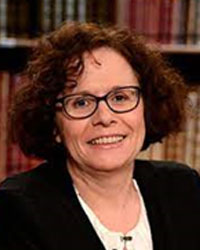
Anne-Marie Lagrange is a Research Director at the French National Center for Scientific Research (CNRS) at the Laboratory for Space Studies and Instrumentation in Astrophysics (LESIA) at the Paris Observatory, and associate Professor at Paris Sciences et Lettres University. She is a member of the French Academy of Science, and earned the Irène Joliot-Curie prize for the Female Scientist of the year in 2011. She specialized in the field of extra solar planetary systems (disks, comets, planets), with the aim to understand how such systems form and evolve, and to search for planets of various kinds, down to Earth twins. She uses various kinds of approaches and observing techniques, in particular spectroscopy, absolute astrometry and high contrast imaging, and the combination of these techniques, to search for extrasolar planets, and characterize their atmospheres, and to study their link with the dust disks in which they orbit. She was the scientific PI of the first adaptive optics instrument on the VLT, which allowed her team and her to make the first images of extrasolar planetary mass companions, opening thus a new path in the field.
She also studied how to estimate and compensate for stellar activity, which is the ultimate barrier against detecting Earth twins using radial velocities, and is a necessary step before imaging such planets, and characterizing their atmospheres.
Wiki-page of Anne-Marie Lagrange
Abstract: Exoplanetary systems represent a vibrant domain in today astronomy. Intriguing questions are how they form, how diverse they are, how unique our Solar System is, and whether life could be found in these distant worlds. I will describe how we find these extrasolar worlds, what they tell us about their diversity and their formation pathways. I will also describe the projects aiming at detecting Earth twins and possible signatures of life.
Professor of Astrophysics and Exoplanetary Science at the University of Cambridge, UK.
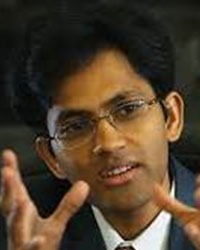
Invented the now widely used technique of atmospheric retrieval to infer atmospheric chemical compositions of exoplanets. He contributed other important developments in the understanding of the atmospheres, interiors, formation conditions, and habitability of exoplanets. Most recently, his work led to the theoretical possibility of a new class of habitable planets, called Hycean worlds, and to the first detection of carbon-bearing molecules in a habitable-zone exoplanet, K2-18b, using the James Webb Space Telescope.
Nikku Madhusudhan's professional home page
Abstract: The search for life elsewhere is one of the major frontiers in modern astronomy. In this talk, we will discuss observational and theoretical developments in the atmospheric characterisation of temperate low-mass exoplanets, and habitable exoplanets in particular. Considering a few case studies, we will present inferences of the atmospheric chemical composition and constraints on the temperature structure, clouds/hazes, chemical disequilibrium and interior/surface conditions. We will discuss the chemical diversity of temperate sub-Neptunes and future prospects in the search for habitable environments and biosignatures in exoplanets over the next decade.
Professor in Earth Sciences at Freie Universität Berlin, Germany.
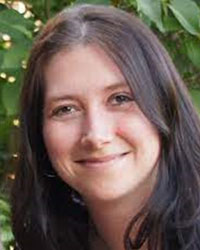 With expertise in the structure of and interior dynamics of rocky planets, she has made important contributions to our understanding of the coupling between the interior, surface and atmosphere of solar system planets as well as exoplanets, including studies of Proxima Centauri b and the Trappist 1 planets.
With expertise in the structure of and interior dynamics of rocky planets, she has made important contributions to our understanding of the coupling between the interior, surface and atmosphere of solar system planets as well as exoplanets, including studies of Proxima Centauri b and the Trappist 1 planets.
Lena Noack's professional web-page
Abstract: The possible evolution paths of a rocky planet and its surface can be very diverse, and depend on several different interior and exterior processes. These are related for example to the planet's mass and compositon, or the stellar activity and orbital configuration of the planetary system. Theoretical models studying the accretion and later evolution of rocky planets, including the initiation of plate tectonis or the build-up capacity of a secondary atmosphere, can help us to understand the range of potential habitable surface conditions. In addition, we can aim to map the possible range of abitic background atmospheres, in which then to search for life e.g. by combinations of gases that would not be (easily) explained by geophysical processes alone. Here I will give an overview of our current understanding and theoretical predictions of the range of atmospheres that we may expect when only considering volcanic outgassing.
Professor in Planetary Sciences at the Space Research Institute in Graz, Austria.
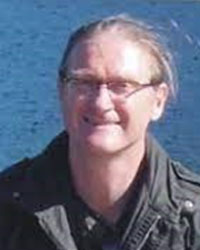 His long research career concentrates around planetary physics, including studies of atmospheric escape processes, evolution of planetary and exoplanetary environment, and habitability of exoplanets.
His long research career concentrates around planetary physics, including studies of atmospheric escape processes, evolution of planetary and exoplanetary environment, and habitability of exoplanets.
Helmut Lammer's professional web-site
Abstract: The talk will address the most important astrophysical and geophysical factors necessary for Earth-like Habitats (EH) with N2/O2-dominated atmospheres inside the habitable zone for complex life (HZCL). It will be explained that the lifetime of the disk and accretion processes of the growing protoplanets set the initial parameter stages for terrestrial planets so that they can end up as EHs. A competition between the time scales of the gas disk and the planetary accretion will determine if an accreting terrestrial planet may end inside the HZCL as a planet with an H2/He dominated atmosphere, or not. Other relevant factors like a planet's thermal evolution and hence the right tectonic regime that is necessary for aerobic lifeforms as we know it will also be addressed. One can expect that many terrestrial planets inside the HZCL will have internal heat budgets and tectonic regimes that are different than those of Earth. Nitrogen is a necessary element in the building blocks of life; therefore, the geobiological N2-cycle and a functioning C-cycle are fundamental factors in the long-term evolution of EHs. Thus, terrestrial planets with N2/O2-dominated atmospheres will have a tectonic regime and will be a strong indication for an aerobic biosphere. Tectonic regimes that do not allow or maintain N2/O2-dominated atmospheres for billions of years are very likely to produce Venus- or Mars-like CO2-dominated atmospheres which will be not be life-friendly for aerobic complex lifeforms. Finally, a newly derived formula that can be used to estimate the potential numbers of EHs in the galaxy, will also be discussed.
Disk evolution and pre-biology:
Professor in astrophysics at Uppsala University, Sweden.
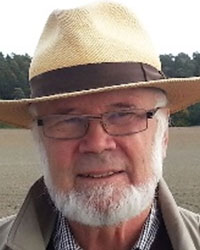 Created some of the first high-accuracy model atmospheres of solar-type and cooler stars, that have been continuously updated and now have been cited more than 3,000 times in the scientific literature.
Created some of the first high-accuracy model atmospheres of solar-type and cooler stars, that have been continuously updated and now have been cited more than 3,000 times in the scientific literature.
Apart from his involvement in astronomy, he has also a great knowledge and interest in humanistic sciences, and holds a honorary doctorate in theology.
Bengt Gustafsson (astronomer) on Wikipedia
Abstract: The atomic chemical composition of the Sun departs systematically from that of most other solar-type stars in that its ratio of volatiles (like the biogenic elements) to the refractories is higher by about 10%. What does this tell about the formation and evolution of the Solar System? Scenarios in terms of different nucleosynthesis, early formation of the pre-solar nebula, of the evolution of the proto-planetary disk, of the engulfing of planets, and of other processes within the system will be considered. Implications, if any, on the habitability of the Solar System will commented on.
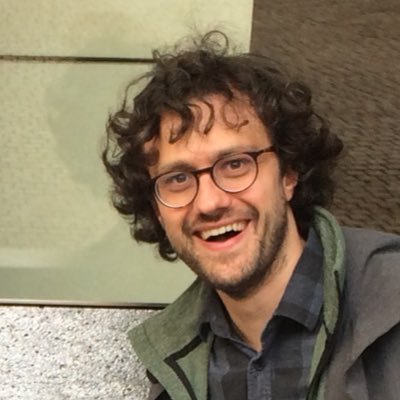 Michiel Lambrechts is an associate professor working in the StarPlan section of the Globe Institute at the University of Copenhagen (Denmark).
Michiel Lambrechts is an associate professor working in the StarPlan section of the Globe Institute at the University of Copenhagen (Denmark).
My aim is to improve our understanding of the various processes that lead to the formation of planets around our Sun and other stars. An important part of my research has been focused on pebble accretion: the mechanism by which protoplanets grow in mass by sweeping up small mm-sized icy/rocky pebbles that are observed to be omnipresent in young protoplanetary discs.
Michiel Lambrechts' professional web-site
Abstract: This talk will cover our current view on how planets, like Earth, grow large in protoplanetary discs. These discs, composed of gas and dust, surround young stars for a few million years after their formation. Starting with microscopic dust particles, solids efficiently grow through coagulation to larger mm-sized particles for which fragmentation becomes important. These pebbles then radially drift inwards, through gas drag, within the disc lifetime. During their radial trek inwards, a significant fraction of the tens to hundreds of Earth-masses of pebbles gets either trapped in dense pebble swarms that get converted to planetesimals, or directly accreted by large planetesimals that act as planetary embryos. Depending on the available mass budget in pebbles, these cores then grow into Earth-like, super-Earths or even gas-giant planets. Putting this all together, we will compare the outcome of this theoretical model to the currently-known exoplanet census, our Solar System, and discuss implications -specifically with respect to volatile delivery - to the composition of habitable-zone planets.
Director of the Center for Astrochemical Studies at the Max Planck Institute for Extraterrestrial Physics in Munich, Germany, where laboratory astrochemistry, multi-wavelength observations, and theoretical models are carried out.
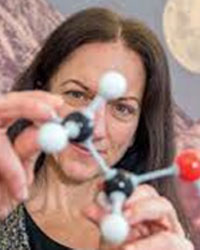
Her research stretches from the physical and chemical structure of the interstellar medium to star formation and protoplanetary disks. She uses molecules to understand how stars like our Sun and planets like our Earth form within molecular clouds in our Galaxy. The first steps toward the formation of pre-biotic species and molecules important to life as we know it are also part of her research.
Short Abstract: All ingredients to make stars like our Sun and planets like our Earth are present in dense cold interstellar clouds. In these "stellar-system progenitors" active chemistry is already at work, as demonstrated by the presence of a rich variety of organic molecules (including precursors of pre-biotic molecules) in the gas phase and water-rich icy mantles surrounding the sub-micrometer dust grains, the building blocks of planets. Here, I’ll present a journey from the earliest phases of star formation to protoplanetary disks, with links to our Solar System, highlighting the crucial role of astrochemistry as a powerful diagnostic tool of the various steps, needed to unveil our astrochemical origins.
Professor of Space Policy and International Affairs at George Washington University and the President of the Committee on Space research (COSPAR).
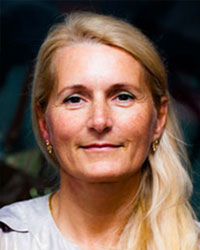 With a degree in molecular biology, in astrochemistry, as well as in management & leadership, her interest spans a wide multidisciplinary area, with important contributions to the scientific literature in - among many fields - astrobiology, prebiotic chemistry, and organic molecules in the interstellar medium, comets and meteorites. Principal Investigator, Co-Investigator and Team leader on several space missions as well as experiments in low Earth orbit.
With a degree in molecular biology, in astrochemistry, as well as in management & leadership, her interest spans a wide multidisciplinary area, with important contributions to the scientific literature in - among many fields - astrobiology, prebiotic chemistry, and organic molecules in the interstellar medium, comets and meteorites. Principal Investigator, Co-Investigator and Team leader on several space missions as well as experiments in low Earth orbit.
Abstract: One of the most compelling questions in planetary science revolves around the origins of life on Earth and the possibility of extraterrestrial life. Key environments conducive to the formation of organic molecules, crucial in the genesis of life, include deep-sea hydrothermal vents, volcanic regions, and primordial oceans. Additionally, the early Earth's chemical raw material may have been enriched by small Solar System bodies that deposited carbon-rich molecules and volatile compounds onto the young planets.
Recent space missions focused on comets and asteroids have markedly enriched our understanding of the prebiotic materials available to the early Earth and Mars. This enhanced comprehension of Earth's primordial biochemical conditions assists in the identification of similar environments on Mars, furthering our quest to unravel the mysteries of life beyond our planet.
Terrestrial contra alien biology:
Professor of genetics at the University of Minnesota.
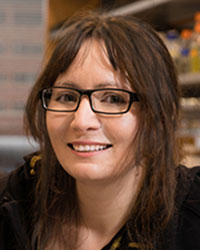 Her pioneering work as founder of the international Build-a-Cell Initiative has brought building of non-living life into a deeper theoretical and experimental reality, with the perspective of “teleportation” of synthetic “biological” material for example between Earth and potential future colonies on Mars. Her lab experiments opened an experimental basis for the RNA world hypothesis of the origin of life.
Her pioneering work as founder of the international Build-a-Cell Initiative has brought building of non-living life into a deeper theoretical and experimental reality, with the perspective of “teleportation” of synthetic “biological” material for example between Earth and potential future colonies on Mars. Her lab experiments opened an experimental basis for the RNA world hypothesis of the origin of life.
Kate Adamala's professional web-page
Abstract: The earliest history of life on any planet includes a series of transitions from non-living matter, through prebiotic synthesis, towards the first living cell. Those transitions leave no witnesses or fossil records. With modern biology representing only a single sample of possible life, it is difficult to speculate how those earliest stages of evolution looked like, and what other possible life forms could have existed on ours and other planets. The emerging field of synthetic cell engineering allows us, for the first time, to directly interrogate those questions. We now have the opportunity to interrogate other possible trees of life, elucidating other ways in which chemistry can become biology.
Professor of astrobiology at University of Washington, Seattle, Washington State, USA.
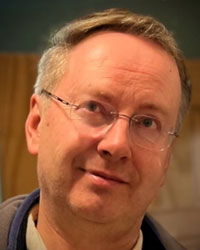
With a background in Atmospheric, Oceanic and Planetary physics, he has made substantial contributions to our understanding of the co-evolution of the Earth’s atmosphere and life.
His scientific work spans a wide range of subjects including conditions for life on Mars and icy moons, environments for the origin and early evolution of life, the Great Oxidation Event, and the role of impacts for the formation of the first pre-biological molecules on Earth and on exoplanets.
On top of his many papers in the scientific literature, an important contribution to the development of the field is his comprehensive book, ‘Atmospheric Evolution on Inhabited and Lifeless Worlds’,
Further information: David Catling on Wikipedia
Abstract: A very oxygen-rich atmosphere sustains multicellular life on Earth, including us, yet Earth’s early history is marked by a lengthy anoxic period. The evolution of Earth's atmospheric oxygen is of interest when we consider other Earth-like planets, and their potential for supporting complex life. Life comparable to advanced metazoans arguably required high partial pressures of oxygen. The multi-billion-year geological timescale for Earth to acquire an oxygen-rich atmosphere, or “oxygenation time”, was thus a limiting step in the evolution of complex life. Here, I will discuss the dependence of complex life on atmospheric oxygen, what caused atmospheric oxygen to rise on the Earth, and whether oxygen-rich atmospheres might evolve on Earth-like exoplanets. I contend that complex animal-like life elsewhere that can move, jump, and think, will breathe oxygen and so biogeochemical conditions for sufficient oxygen in exoplanet atmospheres will limit the distribution of complex life in the universe.
Professor at the Center for Astronomy and Astrophysics at the Technical University Berlin in Germany and associated with Washington State University and SETI in the USA.
 From an educational background in geosciences, he gradually shifted his interest toward microbiology and the interaction of life with its planetary environment. He is now a leading scientist in the field of astrobiology and planetary habitability, about which he has written more than 200 scientific papers, a renowned textbook and several popular science books, the latest one being “The Cosmic Zoo: Complex Life on Many Worlds”.
From an educational background in geosciences, he gradually shifted his interest toward microbiology and the interaction of life with its planetary environment. He is now a leading scientist in the field of astrobiology and planetary habitability, about which he has written more than 200 scientific papers, a renowned textbook and several popular science books, the latest one being “The Cosmic Zoo: Complex Life on Many Worlds”.
Dirk Schulze-Makuch on Wikipedia
Abstract: We have only one example of life as we know it, yet it surprises us with an incredible diversity. When expanding our viewpoint to other forms of life that may exist in the Universe, that diversity is expected to be even larger, because that life has originated and evolved under very different environmental conditions and circumstances.
Life as we don´t know (yet) may utilize different energy sources like magnetic energy or osmotic gradients, and to us puzzling ways of transmitting information from one generation to the next. However, there are constraints as any life form will be intrinsically linked to the environment in which it thrives, and in principle knowing the environment will let us deduce properties about the type of life within it, and vice versa. Also, in a rich biosphere, evolution will drive life to more complexity and complex organisms, some of which will have functional capabilities similar to animal and plant life on Earth.
Professor in Astrobiology at the Department of Biology at Aarhus University, Denmark.
 Theoretical and experimental work in microbial ecology and astrobiology, including studies of the role of biological aerosols and biological ice-nucleation particles in cloud formation and cloud processes, effect of wind-driven abrasion of minerals on Martian regolith, habitability and atmospheric processes, and the resilience of bacteria under Mars simulation experiments.
Theoretical and experimental work in microbial ecology and astrobiology, including studies of the role of biological aerosols and biological ice-nucleation particles in cloud formation and cloud processes, effect of wind-driven abrasion of minerals on Martian regolith, habitability and atmospheric processes, and the resilience of bacteria under Mars simulation experiments.
Kai Finster's professional web-page
Abstract: Clouds are crucial for regulating Earth's temperature and climate by affecting the planet's radiation balance. Despite their importance, clouds are the least understood components of the Earth's climate system, as indicated by recent IPCC reports. Clouds are made up of different-sized droplets, which determine their reflectivity (albedo). Cloud droplets form around tiny particles called cloud condensation nuclei (CCN), which can be either inorganic or organic. The size of a droplet affects whether it remains suspended in the air or falls as precipitation. One important process in cloud formation is the Bergeron process, where ice crystals grow in mixed-phase clouds. This process occurs in regions where the air is supersaturated with respect to ice but subsaturated with respect to liquid water, leading to rapid ice crystal growth. If the density of ice is relatively low compared to liquid water, ice crystals can grow large enough to fall out of the cloud, melting into raindrops if temperatures at lower levels are sufficiently high. The initial formation of ice necessitates the presence of ice nucleating particles (INPs), which can be either mineral or biological. Mineral INPs are active at temperatures below -15°C, whereas biological INPs are active at temperatures above -15°C. Notably, proteins produced by plant pathogenic bacteria, such as those belonging to the genera Pseudomonas, Xanthomonas, and Pantoea, are among the most efficient INPs. In this presentation, we will discuss our research on the role of bacteria in ice formation within clouds and precipitation, and explore the potential of cloud formation as a biosignature in the quest for life on exoplanets.
Professor in biology at University of Southern Denmark and director of the Nordic Centre for Earth Evolution.
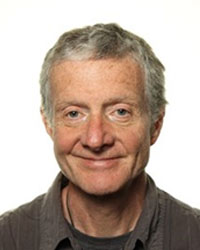 His research include studies of geological-biological interactions, including development of the oxygen abundance in Earth’s atmosphere through geological times and during Earth’s great oxidation event, the relation between oceanic sulfur concentration, carbon cycles and animal evolution.
His research include studies of geological-biological interactions, including development of the oxygen abundance in Earth’s atmosphere through geological times and during Earth’s great oxidation event, the relation between oceanic sulfur concentration, carbon cycles and animal evolution.
Further information: Donald Canfield on Wikipedia
Abstract: The fossil record suggests that eukaryotes were part of the marine ecosystem by about 1700 million years ago. However, the accepted biomarker record of steranes, derived from eukaryotic sterols, do not appear in the rock record until about 780 Ma in what is known the “Rise of Algae”. To explain this time gap, it is variably argued that either eukaryotes were minor shadow members of marine ecosystems for almost 1 billion years after they first appeared, or that the early fossils represent “stem group” organisms that first evolved into “crown group” eukaryotes capable of “modern”-style sterol production around 800 million ago. In this view, complex eukaryote ecosystems with both photosynthesis and grazing also emerged with this relatively late evolution of crown group organisms. We challenge these views. First, using high temperature pyrolysis techniques, we find “modern” steranes in rocks from 1400 and 1000 million years ago, demonstrating that crown-group Eukaryotes evolved before 1400 million years ago. Next, we use a size-based ecosystem model to show that the size distribution of preserved eukaryotic microfossils from 1700 Ma and onwards required an active and complex eukaryote ecosystem complete with photosynthesis and grazing. This result is robust over a wide range of nutrient concentrations. Furthermore, our model results suggest that these ancient eukaryote ecosystems could have provided from one third to one half of the marine primary production. Thus, complex eukaryote ecosystems were likely active from 1700 million years ago and onwards. In this view, the general lack of steranes in the pre-780 Ma rock record could be a result of poor preservation.
The future of life and humanity:
With a degree both in astrophysics and in history and philosophy of science, he has served as the NASA Chief Historian, Library of Congress Chair in Astrobiology, as well as astronomer at the US Naval Observatory.
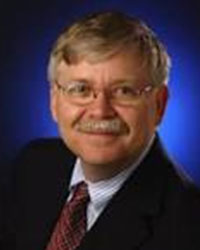 He is the author or editor of more than 25 books in the fields of history of science, astrobiology and the search for extraterrestrial intelligence, which has pronouncedly influenced the development of the field.
He is the author or editor of more than 25 books in the fields of history of science, astrobiology and the search for extraterrestrial intelligence, which has pronouncedly influenced the development of the field.
Steven J. Dick's personal web-page
and Steven J. Dick on Wikipedia
Abstract: The discovery of what I have called a “Biological Universe” full of life would have substantial effects not only on science, but also on society at large, including philosophical, theological, and ethical impacts (Dick, 1996; Dick, 2018). This presentation discusses systematic approaches to those questions from the point of view of history, the nature of discovery, and the promise and pitfalls of analogy, and surmises what the impacts might be under differing scenarios. We also argue based on what I call the Intelligence Principle, “the central principle of cultural evolution” that it is highly likely we live in a post-biological universe full of artificial intelligence. The implications of that scenario are as yet unexplored.
Dick, Steven J. The Biological Universe: The Twentieth Century Extraterrestrial Life Debate and the Limits of Science (Cambridge University Press, 1996).
Dick, Steven J. Astrobiology, Discovery, and Societal Impact (Springer, 2018)
Steven J. Dick's personal web-page and Steven J. Dick on Wikipedia
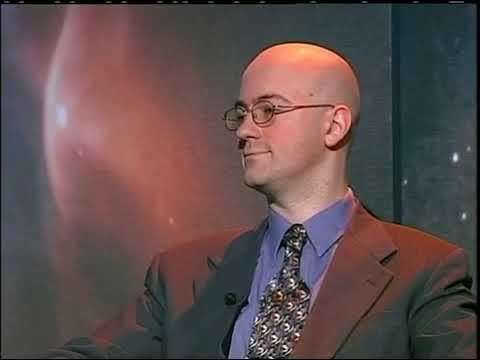 Milan M. Ćirković is a senior Research Professor at the Astronomical Observatory of Belgrade (Serbia) and a research associate of the Future of Humanity Institute at Oxford University, Oxford (UK). He obtained his PhD at the Dept. of Physics, State University of New York in Stony Brook in 2000 with the thesis in astrophysical cosmology. His primary research interests are in the fields of astrobiology (habitable zones, habitability of galaxies, SETI studies), philosophy of science (futures studies, philosophy of cosmology), and risk analysis (global catastrophes, observation selection effects, epistemology of risk). He co-edited the widely-cited anthology on Global Catastrophic Risks (Oxford University Press, 2008, with Nick Bostrom), wrote four research monographs (the latest being Cosmic Microwave Background: Philosophical and Historical Aspects, Cambridge University Press, Cambridge, 2024, with S. Perović), as well as five popular science/general nonfiction books, and authored about 200 research and professional papers. He is currently working on The Terrors of the Earth: Why We Ought to Leave this Planet – and Soon, to be published in 2025 by Penguin Random House.
Milan M. Ćirković is a senior Research Professor at the Astronomical Observatory of Belgrade (Serbia) and a research associate of the Future of Humanity Institute at Oxford University, Oxford (UK). He obtained his PhD at the Dept. of Physics, State University of New York in Stony Brook in 2000 with the thesis in astrophysical cosmology. His primary research interests are in the fields of astrobiology (habitable zones, habitability of galaxies, SETI studies), philosophy of science (futures studies, philosophy of cosmology), and risk analysis (global catastrophes, observation selection effects, epistemology of risk). He co-edited the widely-cited anthology on Global Catastrophic Risks (Oxford University Press, 2008, with Nick Bostrom), wrote four research monographs (the latest being Cosmic Microwave Background: Philosophical and Historical Aspects, Cambridge University Press, Cambridge, 2024, with S. Perović), as well as five popular science/general nonfiction books, and authored about 200 research and professional papers. He is currently working on The Terrors of the Earth: Why We Ought to Leave this Planet – and Soon, to be published in 2025 by Penguin Random House.
Milan M. Ćirković’s personal webpage
Abstract: The Rare Earth hypothesis, suggested in 2000 by Peter Ward and Donald Brownlee, has served as a blueprint for astrobiological theory for the last quarter century. In a sense, it offered the very first general astrobiological paradigm, thus immediately inviting some of the traditional arguments of epistemology and philosophy of science. Its main contention, that simple lifeforms may be ubiquitous throughout the Galaxy and the wider universe, while complex lifeforms similar to terrestrial metazoans, are rare and possibly unique due to the series of “anthropic” coincidences and independent requirements. Apart from many new empirical data provided by observational astronomy in the last ca. 20 years, there are grave conceptual problems with the treatment of these coincidences and requirements within the rare Earth theoretical framework. In particular, there are multiple purely philosophical issues with the usage of counterfactuals and de re modal thinking for justification of some of the rare-Earthist claims. As I shall show in this contribution, these are just some of the many reasons why it is entirely legitimate to assert that the original rare Earth hypothesis is, if not falsified, then much less likely – and even less serious – than hitherto thought.
Assistant Professor of Astrobiology in the Department of Earth and Planetary Sciences at the University of California at Riverside (UCR).
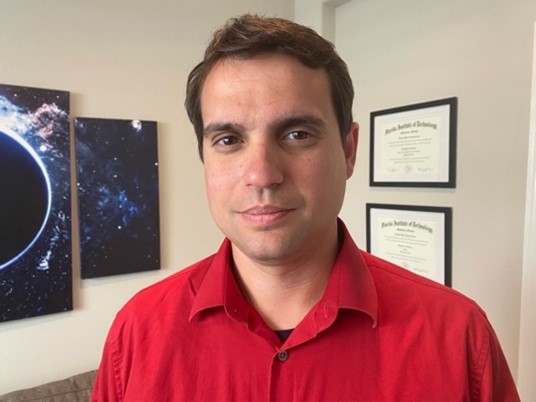
Dr. Schwieterman employs computational methods, including climate, photochemical, and spectral models, to better understand the atmospheric composition, evolution, and remote signatures of terrestrial planets. He maintains an active interdisciplinary research group, including collaborations with geochemists, microbiologists, planetary scientists, and astronomers. His research aims to advance our ability to fingerprint authentic signs of life on exoplanets by identifying potential biosignatures and technosignatures and separating them from their possible false positives (abiotic planetary processes that mimic signs of life). He has also advanced work suggesting that the interplay between planetary climate, carbon cycling, and chemistry may limit the size of the habitable zone where advanced life could be found, with implications for the search for intelligent life beyond Earth.
Edward Schwieterman's professional web-site
Abstract: The habitable zone is typically defined as the circumstellar region where a planet with a CO2-H2O greenhouse could maintain stable surface liquid water, an essential requirement for all known life. However, substantially more CO2 than in Earth’s modern atmosphere is required to maintain clement conditions in most of the habitable zone (HZ), up to over 10,000 times more at the HZ’s outer edge. At these high concentrations, CO2 is known to be a toxic gas for many large O2-respiring organisms (humans and other animals) and would have a substantial impact on ocean chemistry (pH). Coupled with differences in atmospheric chemistry predicted for planets orbiting M dwarf stars, which would facilitate the accumulation of biosignature and toxic gases, the habitable zone real estate where technological civilizations could originate and thrive may be more limited than commonly assumed. I will present modeling results that illuminate these challenges, which also suggest the appearance of intelligent life is not necessarily dependent on random evolutionary steps but—at least in part—related to the co-evolution of the planet and its host star. I will close by discussing the implications of this work for the search for biosignatures and technosignatures beyond the solar system.
Founder and president of the Mars Society and Pioneer Astronautics.
 With a Ph.D. in Nuclear Engineering from the University of Washington, Zubrin’s remarkable career includes being a driving force first in Lockheed Martin’s development of strategies for space exploration, and later also in Martin Marietta Astronautics and in Pioneer Astronautics, designing concepts for interplanetary space missions. The Mars Society is an international organization advocating human exploration and colonization of Mars, while Pioneer Astronautics, which Zubrin led from its founding in 1996 until selling it in 2023, does research and development on aerospace technologies.
With a Ph.D. in Nuclear Engineering from the University of Washington, Zubrin’s remarkable career includes being a driving force first in Lockheed Martin’s development of strategies for space exploration, and later also in Martin Marietta Astronautics and in Pioneer Astronautics, designing concepts for interplanetary space missions. The Mars Society is an international organization advocating human exploration and colonization of Mars, while Pioneer Astronautics, which Zubrin led from its founding in 1996 until selling it in 2023, does research and development on aerospace technologies.
Zubrin is the author of a large number of scientific reports, papers and books on the development of space missions and methods, including a strong promotion of the Mars-direct concept designed to take advantage of the Martian atmosphere to produce in-situ oxygen, water and fuel, as a necessary basis for making long term human presence on Mars and beyond possible. His classic book “The Case for Mars”, was re-issued in 2021 in an extended and widely updated 25th anniversary edition. There and elsewhere Zubrin argues for the ethics of human colonization and how becoming a spacefaring species will benefit the future of humanity also back on Earth.
Welcome reception on Monday, 29 July 2024 from 17:00-20:00 at the venue. A sandwich and beverages will be served along with the opportunity to socialize with other participants and receive your name tag and the abstract booklet.
You will also have the opportunity to set up your posters.
The conference will be located in the historical Festauditorium - (A1-01.01) at Frederiksberg Campus.
Address: University of Copenhagen/SCIENCE, Frederiksberg Campus, Bülowsvej 17, 1870 Frederiksberg
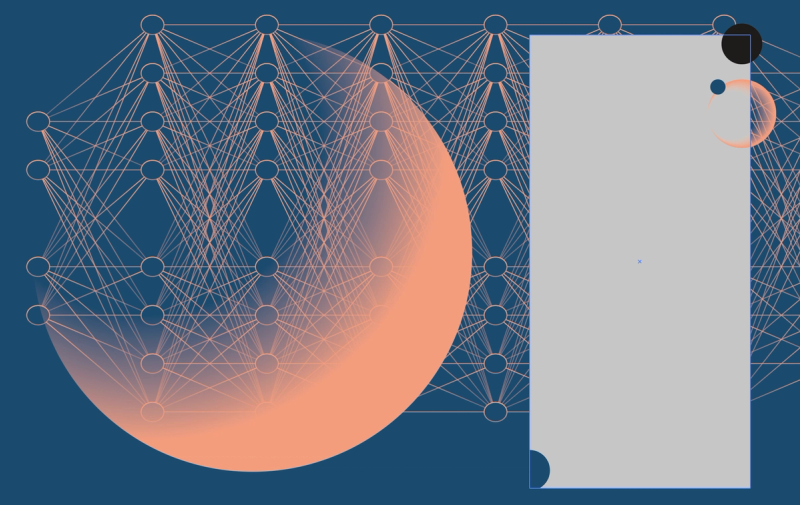
Exploring Exoplanets - free exhibition
Please join us from Monday, July 29th to Friday, August 2nd, at Huset Copenhagen, Rådhusstræde 13, 1466 København K for "Exploring Exoplanets," an immersive exhibition and event series that seamlessly intertwines art and science. Presented in conjunction with the conference “Are We a Unique Species on a Unique Planet” at the University of Copenhagen, this event is independently open to the public and free of charge.
|
Conference program: |
Conference dinner on Wednesday, 31 July 2024:
Venue: The Ceremonial Hall "Festsalen" in the old part of the University of Copenhagen, Frue Plads 4, 1168 København K.
- 18:30-19:00 - Welcome drink
- 19:00-22:00 - Conference dinner: 3-course dinner incl. drinks and coffee.

Public transport in Copenhagen: Copenhagen is well connected by public transport, both within the city and from the airport. You can buy tickets either at train- or Metro stations or on the app “DOT Tickets” https://dinoffentligetransport.dk/en/find-tickets/dot-tickets-app
We recommend to either:
1) Buy single tickets on the DOT app.
2) Buy a Travel Card, that you can put money on and use by tapping it on the blue stands when entering and exiting the bus/train/metro.
3) Buy a City Pass for multiple days (1 – 5 days)
The tickets and City Pass can either be bought at ticket machines at the airport or train stations (choose City Pass Small for you desired duration), or on the DOT app.
To get the City Pass from the DOT app, do the following:
- Download the “DOT Tickets” app to your phone.
- Open app and allow it to use your location.
- In the tab “Buy ticket” go to “City pass”.
- Choose “City Pass Small”, for inner Copenhagen (should also be able to bring you to and from the airport).
- Choose the number of hours you need. Maximum is 120 hours, corresponding to 5 days.
Parking-license with your car at the venue: Please contact Helena Baungaard-Sørensen (helena-baungaard@nbi.ku.dk) to receive an electronic parking-license or to receive a day-to-day parking ticket to leave in your car window.
Deadlines:
Registration: as long as space is available (300€ reg. fee)
Closing deadline for registration: July 1 (at 23:59)
Supported by: CELS & The Novo Nordisk Foundation, The EU ITN CHAMELEON project, and the Carlsberg Foundation

